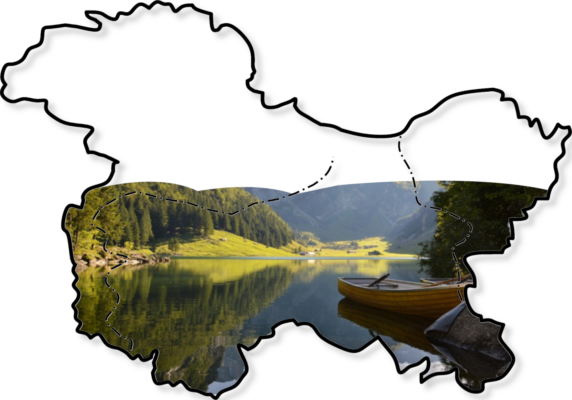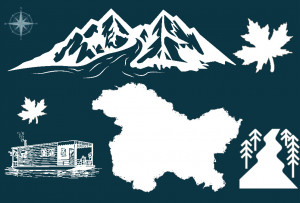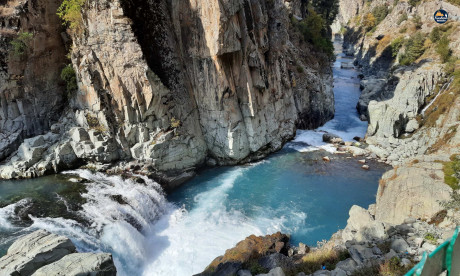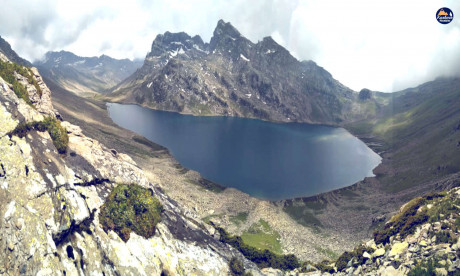Nestled between the mighty Himalayas, the Kashmir Valley boasts a rich historical background that has shaped its cultural tapestry over the centuries. This pristine region, often referred to as “Paradise on Earth,” has witnessed the ebb and flow of diverse civilizations, leaving an indelible mark on its landscape and people.
The earliest known history of Kashmir dates back to the ancient Vedic texts, where it is mentioned as the “Sharada Peeth,” associated with the goddess Saraswati. As centuries unfolded, various dynasties and empires, including the Mauryas and Kushans, exerted their influence on the region.
However, it was during the rule of the great Mauryan emperor Ashoka in the 3rd century BCE that Buddhism found its way into Kashmir. The subsequent centuries saw the flourishing of Buddhist culture and learning, with notable monasteries like Hemis and Thiksey contributing to the intellectual richness of the valley.
The advent of the 14th century witnessed significant changes as the region embraced Islam under the rule of Shams-ud-Din Shah Mir. This marked the beginning of the Muslim Sultanate of Kashmir, and the subsequent centuries saw the rise and fall of various Muslim rulers and dynasties, including the Chak rulers and the Mughals.
The Mughal period, particularly under Emperor Akbar, is considered a golden era for Kashmir. Akbar’s policy of religious tolerance and patronage of the arts and sciences contributed to the cultural and economic prosperity of the valley. The Mughal gardens, such as Shalimar and Nishat, stand as enduring legacies of this era.
In the 19th century, Kashmir became a princely state under the rule of the Dogra dynasty, who were vassals of the Sikh Empire. Later, with the annexation of the Sikh Empire by the British East India Company, the princely state of Jammu and Kashmir came under British suzerainty.
The tumultuous events of the mid-20th century, including the partition of British India and the subsequent conflict between India and Pakistan, profoundly affected Kashmir. The princely ruler, Maharaja Hari Singh, acceded to India in 1947, leading to the first Indo-Pak war. The ongoing territorial disputes have resulted in a complex geopolitical scenario and have left an enduring impact on the region’s history.
The Kashmir Valley’s historical background is a tapestry woven with threads of diverse cultures, religions, and rulers. Today, as Kashmir navigates its way through contemporary challenges, its rich historical legacy continues to be a source of resilience and cultural identity for its people.
Houseboats: Icons of Kashmiri Hospitality:
Amidst this historical journey, a unique chapter unfolded with the emergence of houseboats on the iconic Dal Lake. During the British colonial era, restrictions on landownership led to the innovation of houseboats as an alternative dwelling. The first houseboats graced Dal Lake in the mid-19th century, becoming a distinctive feature of Kashmir’s identity.
Architectural Marvels:
Crafted from cedar wood, these houseboats showcase intricate Kashmiri woodwork. They blend local craftsmanship with Victorian elegance, creating floating abodes that captivate with their beauty.
Cultural Immersion:
Over time, houseboats evolved beyond mere accommodations, offering visitors a cultural immersion. A shikara ride on Dal Lake, relishing local cuisine, and capturing the breathtaking views became integral parts of the houseboat experience.
Present-Day Significance:
Today, the houseboats stand as cultural symbols, preserving the heritage of Kashmir. They continue to enchant visitors, providing a unique way to experience the serene beauty of Dal Lake and the timeless allure of the Kashmir Valley.
In essence, the historical journey of Kashmir and the tale of its houseboats weave together, creating a narrative that beckons travelers to immerse themselves in the timeless charm of this enchanting region.







